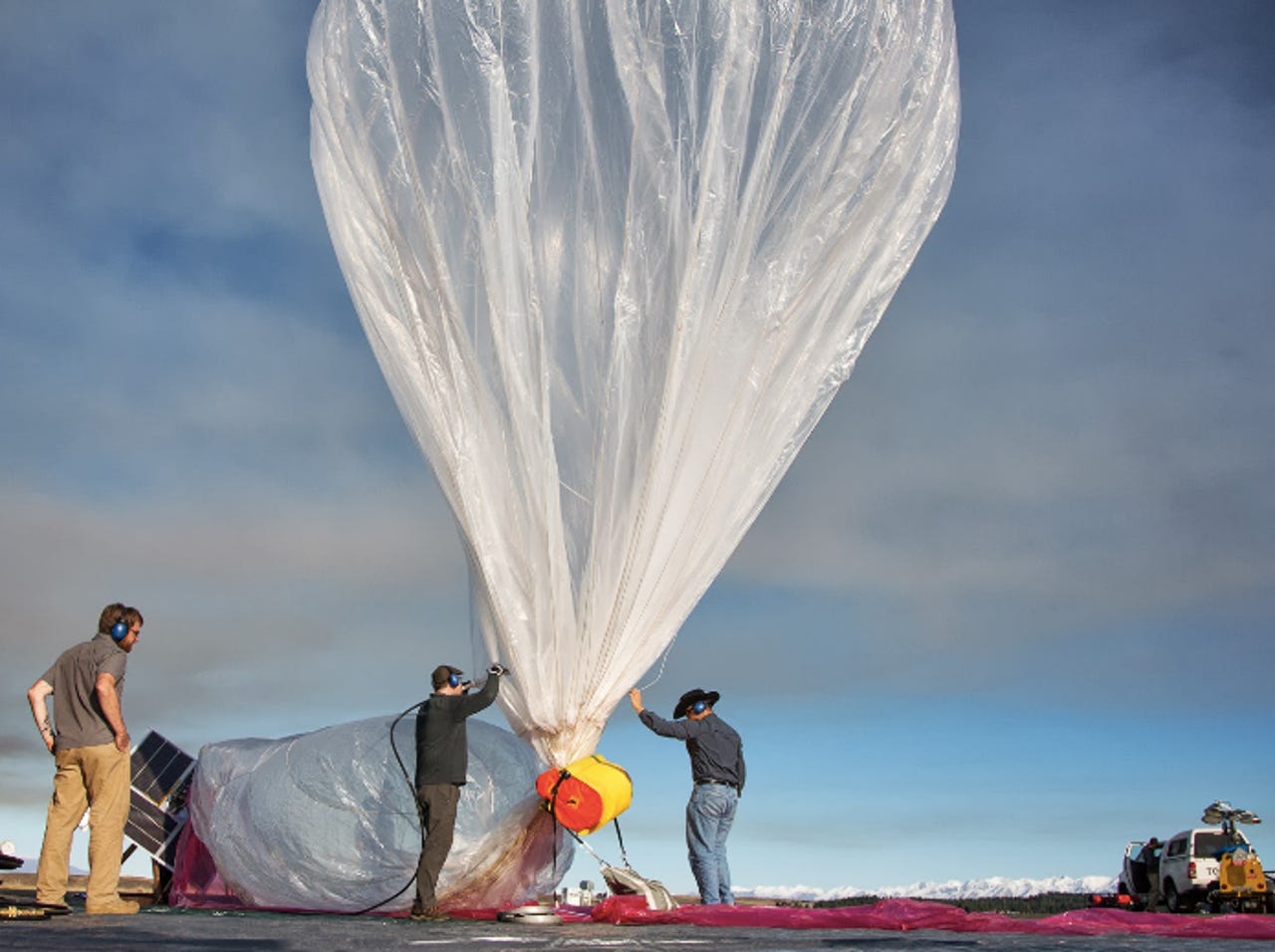Google's Project Loon uses big networked air balloons to fill internet black holes

Over the weekend Google kicked off Project Loon, its experiment to work out whether it's possible to patch internet connectivity gaps around the world with a string of networked balloons.
The project was born out of from Google's X Lab, which develops "moonshot" radical technology proposals aimed at solving a global problem. In this case, the problem is providing broadband for two-thirds of the world's seven billion people that live in rural and remote areas and don't have reliable access to the internet.
Google launched the 30 radio-laden balloons in Canterbury, near Christchurch in New Zealand, over the weekend, with each able to deliver 3G-comparable speeds to "hundreds" of people in an area that covers a 40km diameter. The balloons are travelling about 20km above Earth's surface, which Google notes is twice the altitude of commercial airlines and not in the path of birds.
Each rig's flight systems are charged up in four hours using solar panels, with additional power stored in a rechargeable battery. Each balloon contains a GPS for tracking its location; three radio transceivers, including one backup; a radio for balloon-to-balloon communications, and another for balloon-to-ground communication. The radios are operating using unlicensed spectrum in the 2.4GHz and 5.8GHz bands.

Currently 50 people in New Zealand are testing connections to the network of balloons.
The balloons hitch a slow ride on different layers of wind in the Earth's stratosphere. As Google explains on its Project Loon page, the flight systems are used to move the balloons up or down to take advantage of the different directions and speeds each layer of wind currents is moving at.
"Winds in the stratosphere are generally steady and slow-moving at between 5mph and 20mph, and each layer of wind varies in direction and magnitude. Project Loon uses software algorithms to determine where its balloons need to go, then moves each one into a layer of wind blowing in the right direction. By moving with the wind, the balloons can be arranged to form one large communications network."
The project is now working out how to make the balloons stay in the area where they're wanted. Not surprisingly, it's solving this with "some complex algorithms and lots of computing power".
Project Loon is now looking expand the pilot in countries at the same latitude as New Zealand.